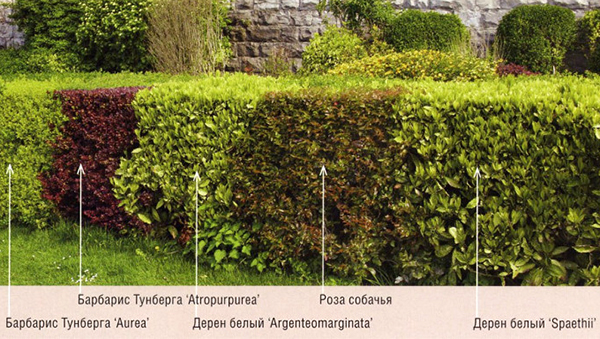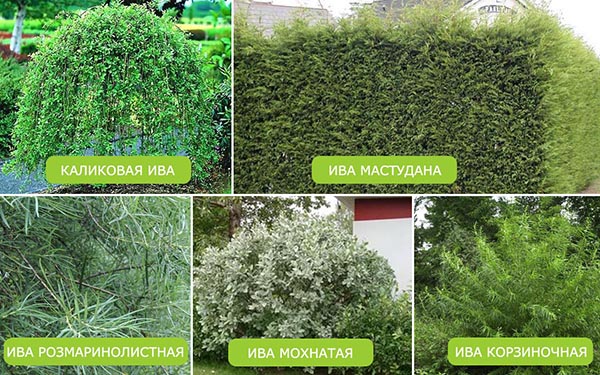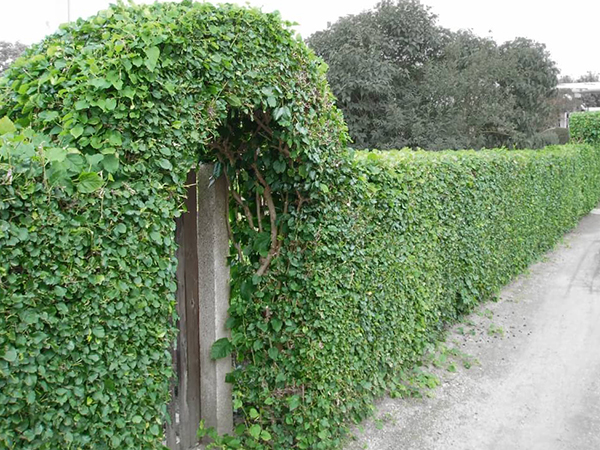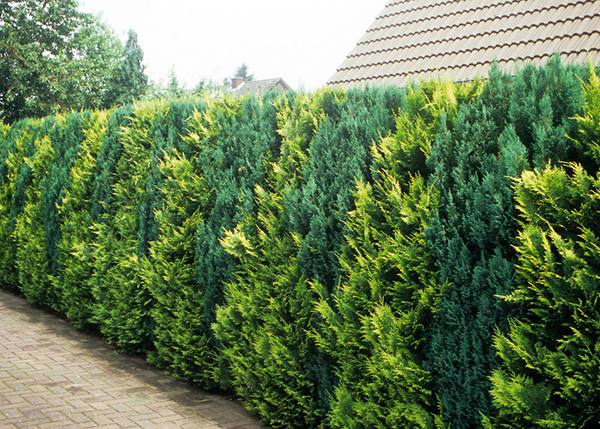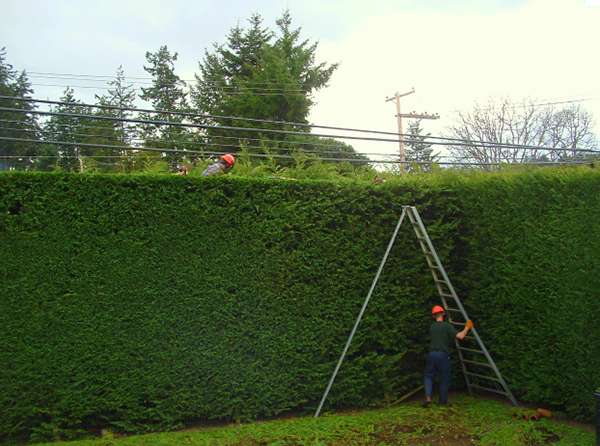Choosing the height and plants for the hedge
Content
Advantages and disadvantages
A hedge of plants in the country has a lot of obvious advantages:
- first of all, this is the decoration of the site - well-groomed, timely trimmed shrubs look great;
- a high fence around the perimeter of the site will originally designate the territory, close it from prying eyes;
- an average height of a hedge is an excellent way of zoning a site according to its functional purpose;
- low living fences can be used to designate flower beds, lawns, garden paths;
- dense fencing can significantly reduce the noise level;
- a high living wall protects the area from winds, reduces the amount of dust and creates a favorable microclimate around the house.
Of course, growing a beautiful and functional hedge is troublesome, but this can hardly be considered a disadvantage. Every year, and sometimes several times per season, each bush needs to be shaped and cut, giving it the desired shape.
Especially often "repair" is required for fences with a straight upper line, since in this zone the growth of shoots is the most active and decorative forms are quickly lost. However, you can always choose plants according to your capabilities. For example, form a round or triangular fence, use climbing plants or conifers.
Video "Types of hedges"
In this video, the expert will talk about the types of hedges and their benefits.
Hedge plants
The choice of plants for decorative fencing is varied, but to make it easier to solve this problem, you should immediately decide on the purpose and appearance of the future "fence". It can consist of one or several tiers, have strict or free forms, be an exclusively decorative element or perform a protective function.
In each case, different hedge shrubs are planted: deciduous, coniferous, flowering, with climbing shoots. They all have their own characteristics, which will be discussed below.
Deciduous
Decorative deciduous fences are the most original and unpretentious due to the following qualities of the crops from which they are formed:
- good adaptation to a changeable climate;
- lack of high requirements for care;
- they tolerate frequent pruning painlessly;
- as they grow and mature, they form perennial, very dense hedges;
- change their appearance depending on the season, giving the site a special charm;
- evergreen deciduous fence looks incredibly fresh in winter, when there is no green at all.
For the formation of a dense deciduous hedge, preference should be given to compact shrubs with small leaves and thin branching shoots. These include:
- golden currant, alpine;
- berries: chokeberry, irga, elderberry, viburnum;
- barren honeysuckle;
- shrubs forming dense thickets: hawthorn, cotoneaster, blackthorn;
- yellow and pink acacia;
- variegated sod;
- flowering plants: spirea, hydrangea.
If you want a fast-growing, dense hedge, plant a willow tree.This plant is famous for being easily rooted in any conditions, unraveling very quickly and building up green mass.
Curly
Lianas and climbing plants are able to embody the most daring design idea on the site. This is the perfect way to hide an unsightly wall, fence, or utility structure. Flowering plants such as roses and clematis can be used to decorate small architectural objects in the recreation area (gazebos, arches, verandas, balconies). To create a hedge, any fast-growing shrub with an increase in shoots of up to 1 m per year is suitable: blackberries, Siberian hawthorn, lianas.
Conifers
The evergreen coniferous hedge is a timeless classic. Fences made from such plants are always popular for a number of reasons, including:
- high density and durability of the fence;
- decorativeness that persists regardless of the season;
- slow growth of shoots, eliminating the need for the gardener to often take out the scissors for pruning;
- versatility in application (planting of the same type or combination with deciduous crops);
- in addition, ephedra painlessly tolerate a haircut and easily take the desired shape.
Unfortunately, not all conifers have sufficient winter hardiness. For the conditions of the middle lane, such conifers as thuja ("queen" of hedges), dwarf mountain pine, spruce, and junipers are suitable.
Height selection
By height, hedges are divided into three main types.
Low
The height of such a fence is no more than 50 cm. Sometimes it is called a curb. The main purpose of a low hedge is to frame flower beds and walkways. Borders of flowers or grassy crops look great against the background of a mixborder, they can complement any landscape composition, with them the dacha takes on a completely different, more well-groomed look. You can make a low border from euonymus, boxwood, spirea, dwarf jasmine, dwarf thuja and junipers.
High
A fence with a height of more than 1.5 m falls under this definition, although often a living wall is several meters, especially if it covers the area around the perimeter. So that the long-term "fence" does not lose its decorative decoration for a long time, it is advisable to plant tall, but compact trees: cypresses, thuja, fir, maple, honeysuckle.
Average
A hedge from 50 cm to 1.5 m is considered to be of average height.As a hand can easily reach its edge, it is possible to form a planting from any plants, including fruit and berry plants:
- various types of currants, dogwood, irgi, hazel;
- flowering plants: grass, acacia, forsythia, lilac;
- conifers and evergreen deciduous shrubs.
When choosing plants for a hedge, be sure to pay attention to criteria such as adaptability to the shade, certain climatic conditions, the intensity of shoot growth and age. All cultures should be of the same age and have the same requirements - only in this case you will be able to achieve the desired result and get aesthetic satisfaction from your work.


